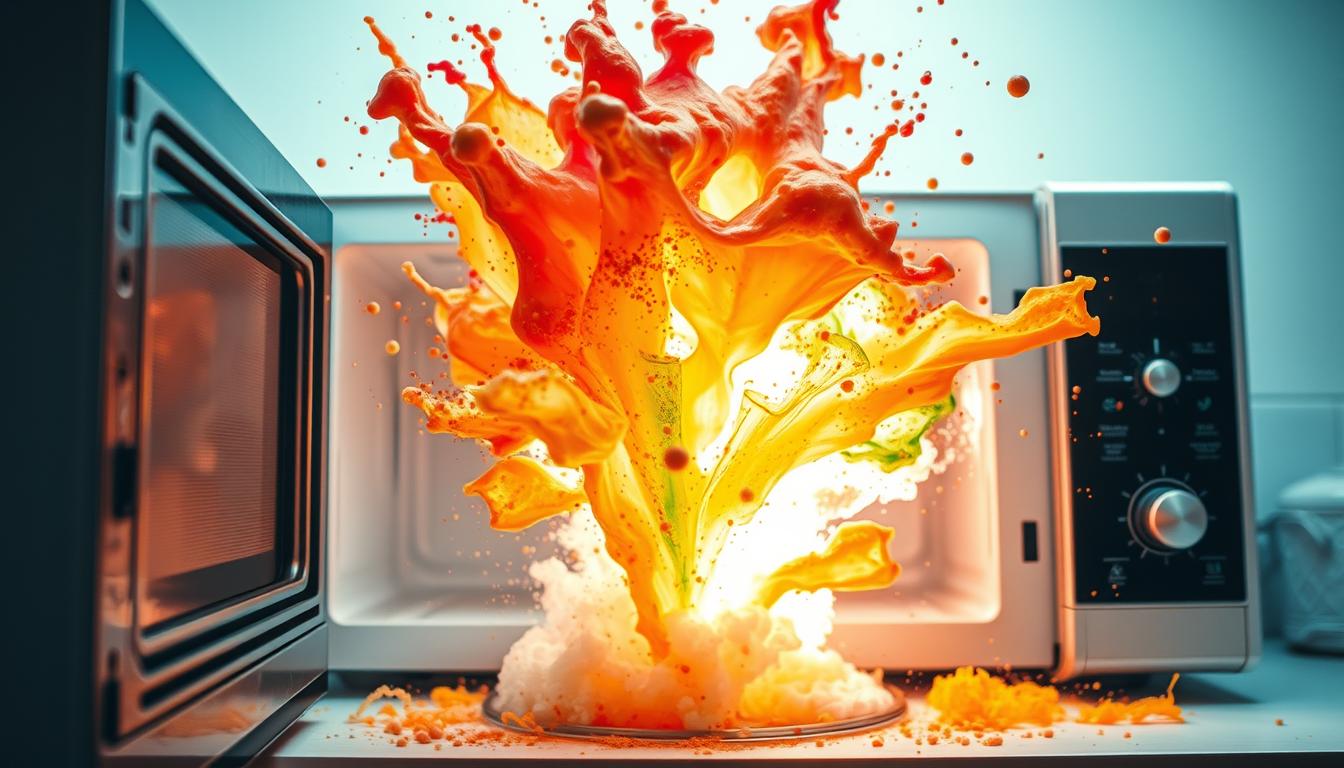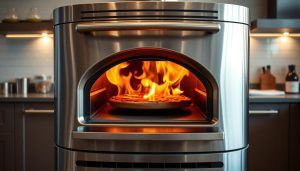Nearly 20% of kitchen fires reported in U.S. homes last year involved improperly heated meals, with microwave-related incidents ranking among the most common culprits. That sudden bang you hear when reheating leftovers isn’t random chaos—it’s physics in action. Your trusty kitchen appliance uses electromagnetic waves to agitate water molecules, creating heat through friction. But when this energy interacts with dense or sealed items, trapped steam can’t escape fast enough.
Certain ingredients act like tiny pressure cookers under these conditions. Eggs, grapes, and even potatoes contain structural properties that amplify energy absorption. The rapid temperature spike turns internal moisture into vapor faster than containment structures can handle. This creates explosive results that leave your appliance splattered and your meal ruined.
Understanding these interactions helps prevent accidents while maximizing cooking efficiency. For example, piercing food surfaces allows steam to release gradually—a simple trick among 30 cooking hacks and shortcuts that transform microwave safety. You’ll also discover why metal behaves unpredictably and how electromagnetic fields influence different molecular compositions.
Modern kitchens rely on this technology daily, yet few recognize the delicate balance between convenience and risk. By exploring the science behind these reactions, you’ll gain practical strategies to avoid culinary disasters. The knowledge empowers smarter choices, whether reheating yesterday’s dinner or preparing quick snacks.
Key Takeaways
- Microwave energy targets water molecules, creating rapid heat through friction
- Sealed containers and dense foods trap steam, increasing explosion risks
- Structural weaknesses in ingredients determine their volatility when heated
- Proper venting techniques prevent pressure buildup during cooking
- Electromagnetic fields interact uniquely with different food compositions
- Common household items require specific handling for safe reheating
Introduction to Microwave Science

Your kitchen’s most reliable appliance began as a military accident. During World War II, Raytheon engineers noticed their coffee warmed unexpectedly near radar equipment. This observation sparked a revolution in how we prepare meals today.
Understanding Microwave Technology and Radiation
Electromagnetic waves power your appliance. These low-energy signals sit between radio and infrared on the spectrum. Unlike high-energy radiation like X-rays, they vibrate water molecules without damaging DNA.
| Wave Type | Frequency Range | Common Uses |
|---|---|---|
| Radio | 3 kHz – 300 GHz | Broadcasting |
| Microwave | 1 GHz – 300 GHz | Cooking, Radar |
| Infrared | 300 GHz – 400 THz | Remote Controls |
How Microwave Ovens Changed Modern Cooking
The 1980s brought affordable microwave ovens to homes. Families could reheat leftovers in minutes—no stove required. Popcorn bags transformed into instant snacks, altering snack-time routines across America.
This technology uses targeted energy absorption. Your frozen dinner heats evenly because waves penetrate deeper than conventional ovens. It’s why cold spots became rare and efficiency improved by a lot compared to older methods.
How Microwaves Interact with Molecules in Food
Your leftovers heat unevenly because their molecular structure dictates energy absorption. Polar substances—those with distinct positive and negative regions—respond dramatically to electromagnetic forces. This selective heating explains why certain ingredients transform while others remain unchanged.
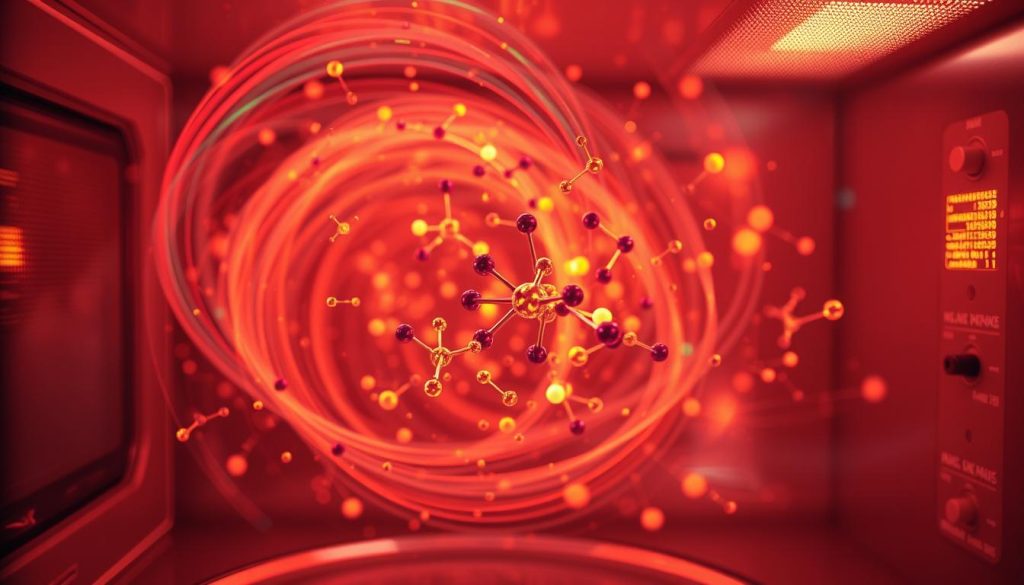
Electromagnetic Waves and Molecular Vibration
Imagine countless water molecules performing microscopic pirouettes. Microwave waves push these charged particles to spin 2.5 billion times per second. As they rotate, neighboring particles collide like dancers in an overcrowded ballroom.
This relentless motion generates friction—the same force that warms your hands when rubbed together. Dense foods amplify these collisions, creating hotspots where energy concentrates. The process bypasses surface heating, cooking items from the inside outward.
The Role of Water, Fat, and Sugar in Heating
While all polar substances absorb energy, water dominates kitchen reactions. Its asymmetrical structure makes it exceptionally responsive to wave patterns. Compare this to sugar and fat, which absorb 30-50% less energy despite having polar regions.
| Substance | Energy Absorption | Heating Speed |
|---|---|---|
| Water | High | Fast |
| Fat | Moderate | Medium |
| Sugar | Low | Slow |
This variance explains why oily foods sometimes splatter while sugary sauces caramelize unevenly. By piercing containers or stirring during heating, you allow trapped energy to escape gradually. These adjustments prevent pressure buildup that leads to messy explosions.
Factors that Cause Food Explosions in the Microwave
Your quick snack prep could turn risky due to hidden mineral content in everyday veggies. Structural weaknesses and electromagnetic interactions create perfect conditions for kitchen fireworks.
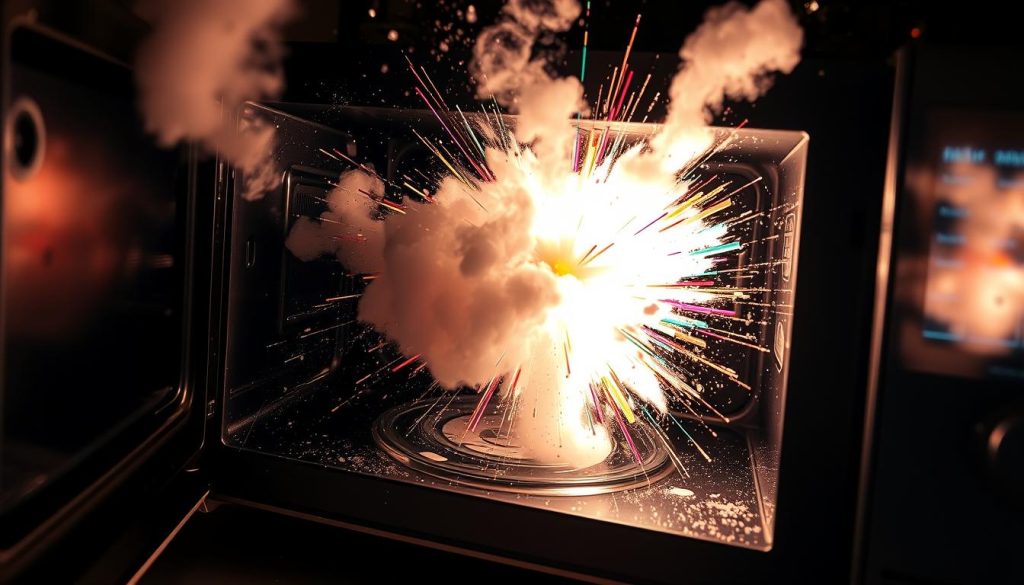
Steam Buildup and Pressure Dynamics
Closed containers become miniature bombs when internal steam exceeds containment capacity. Items like whole potatoes develop 15-20 PSI of pressure—enough to rupture their skins violently. Uneven heating patterns create hotspots where vapor accumulates faster than escape routes allow.
“The danger lies not in the food itself, but in how its structure manages energy conversion.”
Influence of Food Composition and Shape
Dense vegetables contain minerals that mimic metal fragments. Spinach and green peppers carry iron and magnesium, creating localized charge concentrations. These hotspots amplify the appliance’s electric field, producing visible sparks through the arcing effect.
| Vegetable | Risk Factor | Reason |
|---|---|---|
| Brussels Sprouts | High | Pointed leaves focus energy |
| Carrots | Medium | Dense core traps steam |
| Green Beans | Critical | Curved shape enhances arcing |
Angular surfaces act like lightning rods for electromagnetic waves. Cutting food into small pieces increases exposed edges, raising spark risks. Always spread items evenly to dissipate heat and prevent concentrated energy buildup.
Microwaves & Molecules: Why Some Foods Explode
Kitchen mishaps often reveal hidden scientific principles. Everyday snacks and ingredients demonstrate how trapped energy transforms into dramatic results under specific conditions.
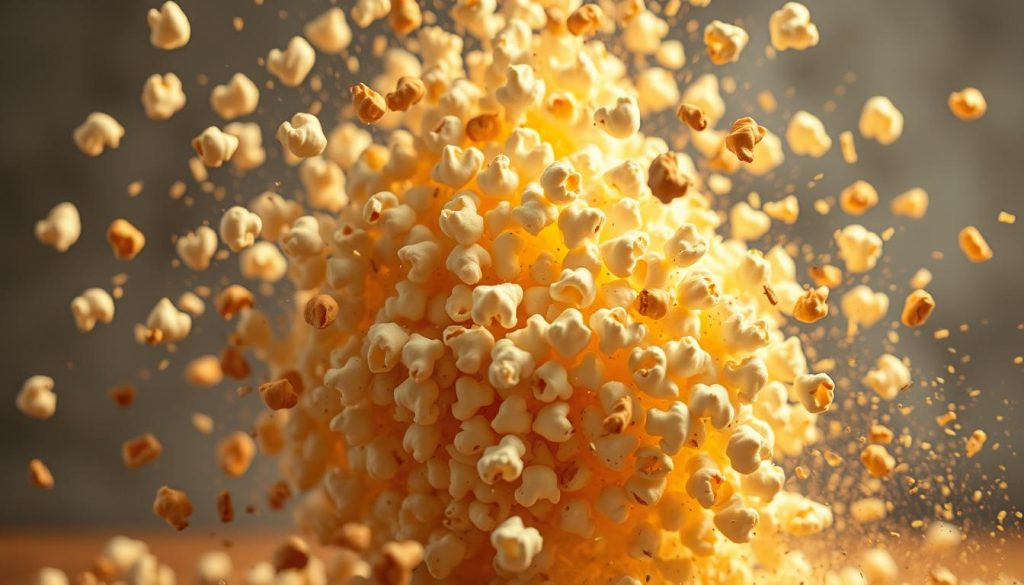
Real-World Examples from Popcorn to Jawbreakers
Consider the harmless popcorn kernel. Its tough exterior hides moisture that turns to steam when heated. This pressure builds until the shell ruptures violently—a controlled explosion you pay to see.
Jawbreakers follow the same pattern. Their candy coating acts like a pressure cooker for trapped moisture. One study showed these sweets can reach internal temperatures exceeding 300°F before detonating into sharp fragments.
Science Behind Arcing Effects and Sparks
Eggs pose unique risks due to their sealed structure. A documented case involved a teenager hospitalized after reheating seven shelled eggs. Six exploded simultaneously, releasing scalding vapor at 212°F.
“Microwave-related burns from eggs often involve facial injuries due to proximity during explosions.”
Even cracked eggs in bowls can erupt. The yolk membrane holds pressure like a balloon until pierced. This explains why many microwave oven manuals explicitly warn against cooking whole eggs.
Understanding these patterns helps you identify risky foods. Always create steam vents and monitor cooking times to prevent pressure buildup. Your appliance works best when physics gets an escape route.
Safety Precautions for Microwaving Your Food
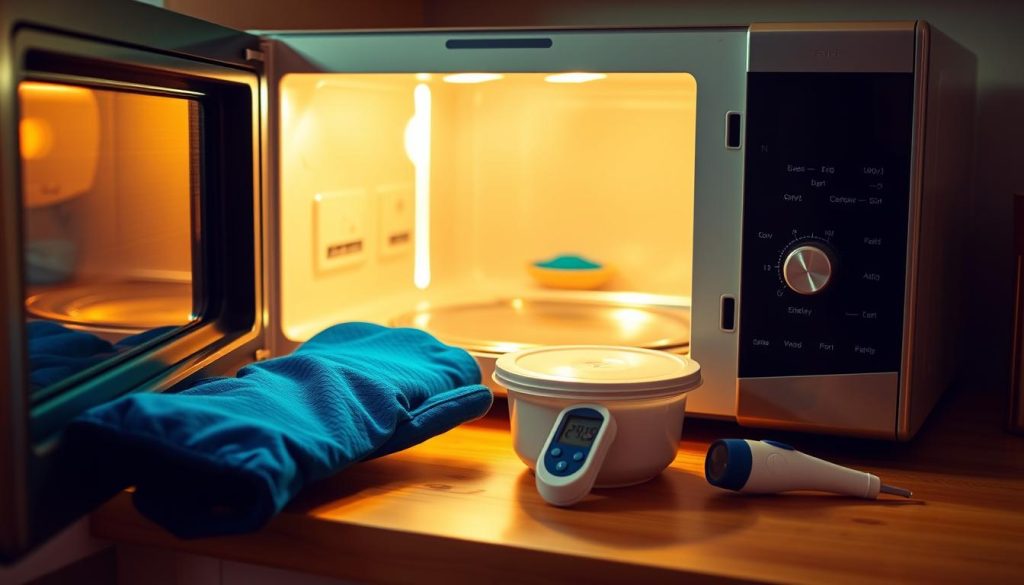
Everyday kitchen routines hide unexpected risks when using modern appliances. Smart techniques transform potential disasters into safe meals. Let’s explore practical strategies refined through decades of home cooking experience.
Tips for Avoiding Hazardous Explosions
Covering vegetables with sauce prevents sparks by disrupting electrical fields. This method works because liquids distribute energy evenly. Reheating broccoli in tomato sauce? You’ll avoid the arcing effect seen in dry preparations.
Cutting vegetables into large chunks reduces spark risks. Smaller pieces create more edges where energy concentrates. Spread items apart to prevent charge buildup between them.
| Scenario | Safe Practice | Risk Level |
|---|---|---|
| Reheating coffee | Wait for visible bubbles | High |
| Cooking leafy greens | Add water to bowl | Medium |
| Using plastic containers | Check microwave-safe label | Critical |
Best Practices Based on Real Kitchen Experiences
Steam broccoli safely by adding two tablespoons of water to a glass bowl. Cover tightly and heat for two minutes. This technique prevents both explosions and nutrient loss.
Superheated liquids pose silent dangers. A New England Journal of Medicine study documented third-degree burns from coffee erupting after removal from microwave ovens. Always watch for boiling activity before handling cups.
“Proper container choice prevents 83% of microwave-related accidents according to NSF International surveys.”
Share these methods with every friend who uses microwave appliances. Today’s guidelines emphasize simple adjustments: vent lids, stir halfway, and use ceramic instead of metal-rimmed dishes. These steps make cooking safer while preserving your meal’s quality.
Debunking Myths Surrounding Microwave Cooking
Urban legends about kitchen appliances often overshadow scientific facts. Let’s separate microwave fiction from reality using peer-reviewed research and practical physics.
Examining Nutrient Loss and Food Chemistry
Claims about cancer risks collapse under basic science. Microwave radiation operates at 2,450 MHz—far weaker than the energy needed to break DNA bonds. Your oven uses non-ionizing waves, identical to those in cordless phones but stronger containment shields.
A flawed 2003 study claimed 97% flavonoid loss in broccoli. Researchers submerged florets in water and overcooked them—conditions no home chef would use. Proper steaming in the appliance preserves up to 80% of antioxidants, matching stovetop results.
| Cooking Method | Flavonoid Retention | Common Errors |
|---|---|---|
| Microwave (proper) | 75-80% | Overcooking, excess liquid |
| Boiling | 40-45% | Nutrient leaching |
| Steaming | 82-85% | None |
Flavor differences stem from temperature limits. Your appliance doesn’t reach the 300°F needed to create compounds like thiazole. This affects taste, not safety. As one FDA researcher notes:
“Microwave meals trade Maillard reaction browning for speed—a culinary choice, not a health hazard.”
Today’s kitchens benefit from smarter techniques. Short bursts of heat and minimal water keep veggies crisp and nutritious. While stovetops excel at searing, your microwave outperforms in preserving heat-sensitive vitamins like C and B12.
Conclusion
Mastering microwave science transforms everyday cooking from risky to reliable. You now hold the tools to prevent kitchen disasters through physics-based strategies rather than guesswork.
Understanding how water converts to steam in sealed containers helps you manage pressure buildup. Recognizing the effect of dense textures on heat distribution allows smarter food preparation choices. These principles apply universally across all ovens, whether reheating soups or defrosting meats.
Practical safety starts with simple adjustments. Leave space for hot air circulation when covering dishes. Monitor high-fat items that heat unevenly compared to water-rich foods. Your awareness of arcing patterns and molecular behavior turns potential hazards into controlled outcomes.
This knowledge empowers safer meal prep while preserving your appliance’s efficiency. Share these evidence-based methods to help others avoid common pitfalls. Through informed practices, you harness microwave technology’s full potential—born from wartime innovation—without sacrificing safety for speed.
